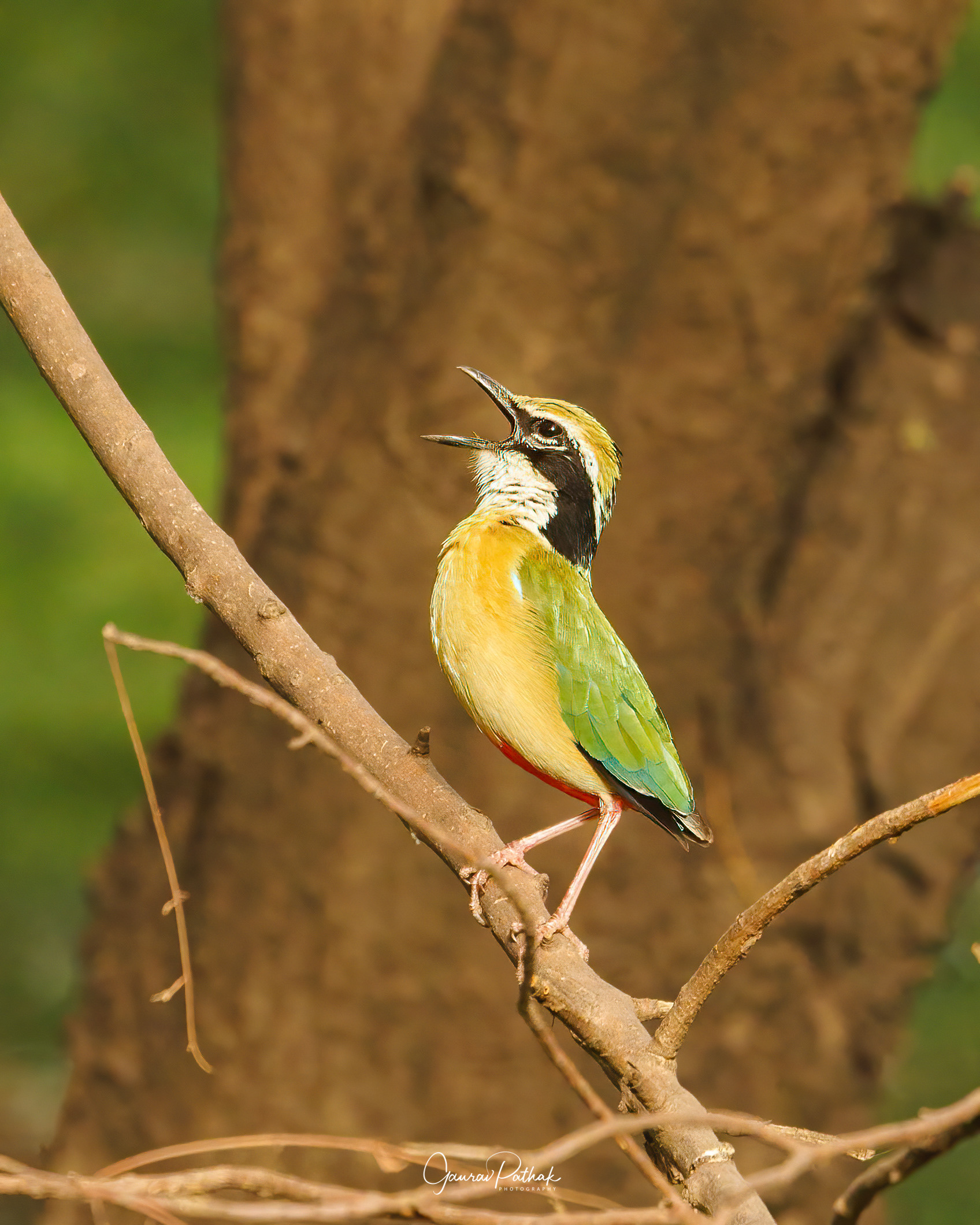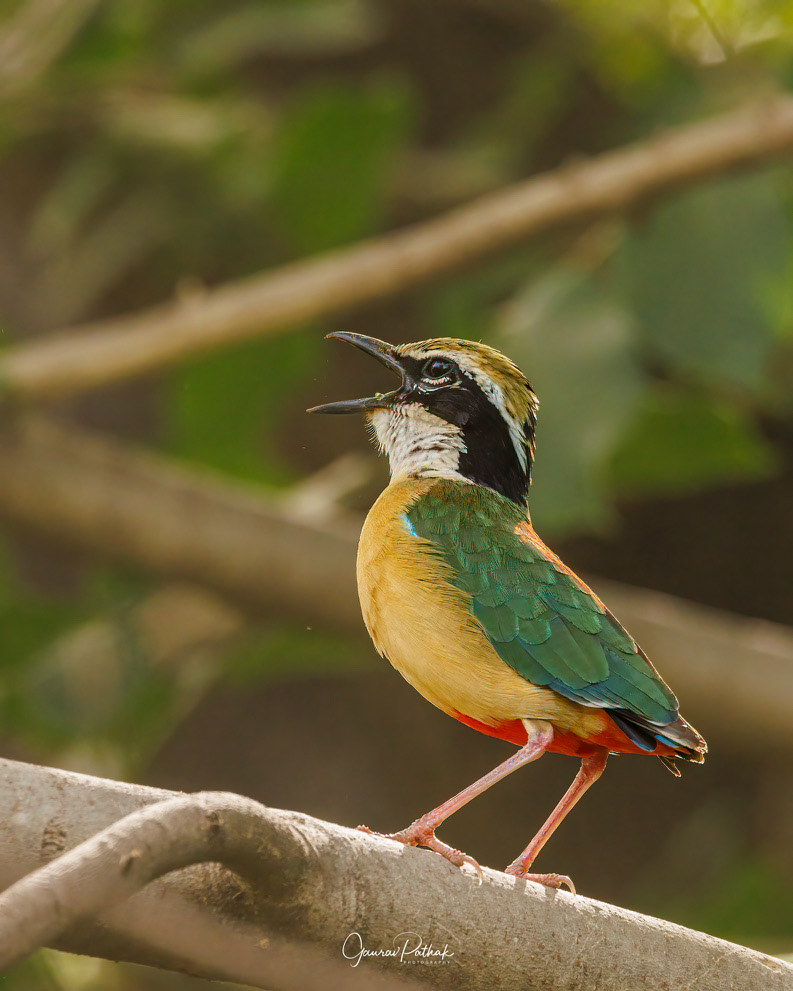The Vibrant Indian Pitta: A Guide to Understanding, Photographing, and Spotting this Enigmatic Avian Jewel in Delhi NCR
In the heart of the bustling Delhi National Capital Region (NCR) lies an elusive and stunning bird that can rival the most exquisite jewels with its vibrant plumage and lively demeanour - the Indian Pitta (Pitta Brachyura). This captivating passerine has enamoured nature enthusiasts and photographers alike with its striking appearance and charming behaviour. In this article I try to delve deeper into the world of the Indian Pitta, exploring its common behaviour and offer insights into the best times to spot and photograph this avian gem in Delhi NCR.
The Indian Pitta, a small-sized bird measuring about 18-19 centimetres in length, boasts an exquisite array of colours that make it a true marvel of nature. Its upper parts are adorned with a mesmerizing blend of blue, green, and black, while its underparts display a captivating fusion of bright red, yellow, and white. This stunning palette has earned the Indian Pitta its fitting nickname - the “Navrang” as it is known colloquially or "Jewel of the Forest" in English.
Habitat and Occurrence in Delhi NCR
The Indian Pitta is a migratory bird, making its journey to the Indian subcontinent during the breeding season. It arrives in India around the end of April to early May and departs for its wintering grounds in September. It is widespread across the Indian subcontinent and is spotted in various regions, including the Western Ghats, Eastern Himalayas, central India, and parts of the north-eastern states.
While dense deciduous and evergreen forests are the preferred habitats of the Indian Pitta, these enchanting birds can be spotted in Delhi NCR as well. They often inhabit urban green spaces, city parks, and even large gardens where ample foliage is common. These accessible habitats offer a unique opportunity for city-dwellers to connect with the beauty of nature and observe the Indian Pitta's behaviour up close.
Some of the common areas in and around Delhi NCR where the Pitta is visible are – Bhondsi (Gurgugram), Asola Bhati and Mangar Bani to name a few.
Ideal Seasons and Timing
Spotting the Indian Pitta in Delhi NCR requires knowing the right times to look for them. The birds make their appearance during the monsoon and post-monsoon periods, which typically span from July to September. This is the breeding season for the Indian Pitta, and during this time, they migrate to the region in search of suitable nesting sites and abundant food sources.
To maximize your chances of spotting and photographing the Indian Pitta in Delhi NCR, consider the following times of day:
Early Mornings: Dawn is a magical time to venture into nature. Indian Pittas are often more active during the early hours of the morning, engaging in their characteristic hopping foraging behaviour as they search for insects and worms.
Late Afternoons: As the day begins to wind down, the Indian Pitta may make another appearance as it continues its search for food. The soft afternoon light provides a beautiful backdrop for capturing its vibrant plumage.
Diet and Feeding Behaviour
The Indian Pitta's diet primarily comprises insects, earthworms, and other small invertebrates. While observing these birds, you may notice their distinctive feeding technique. They employ a rhythmic hopping motion on the ground, occasionally pausing to tilt their heads and listen for potential prey beneath the fallen leaves. Patiently observing this behaviour can lead to captivating photographs of the Indian Pitta in action.
Foraging for food
Courtship and Nesting
When it comes to courtship, the Indian Pitta engages in elaborate displays, including head bobbing and wing-fluttering. Once pairs are formed, they proceed to build nests in concealed locations, often among the roots of trees or in hollows on the forest floor. Photographing these secretive moments requires immense patience and the utmost respect for their nesting habitat.
Indian Pitta Mating (with Juv. in the background)
Vocalisation
While the Indian Pitta's appearance is undeniably captivating, its vocalization adds another layer of fascination. Its call can be described as a melodious series of short whistles, with varying pitches and intensity. During the breeding season, male Pittas use their vocal talents to establish territory and attract mates, creating a symphony of sounds in the forest.


Tips for Photographing the Indian Pitta
Observational Power and Patience: Spend time closely observing the Indian Pitta's movements and behaviours. Anticipate their actions to be ready for those fleeting, magical moments.
Camouflage and Stillness: Given the Indian Pitta's shyness, blending into your surroundings and maintaining absolute stillness is crucial. Camouflage clothing or a hide can help you stay inconspicuous while waiting for that perfect shot.
Noiseless Photography: Using a mirrorless camera can yield excellent benefits as you can switch your camera to the electronic shutter to avoid startling the birds.
The Power of Optics: When photographing these elusive birds, opt for telephoto lenses with focal lengths ranging from 300mm to 600mm. These lenses allow you to capture intimate shots without intruding on their natural behaviour.
The Indian Pitta, with its stunning colours and intriguing behaviour, offers a rewarding subject for birdwatchers and photographers seeking to capture the beauty of nature. By familiarizing yourself with its habitat, behaviours, and vocalizations, you can increase your chances of witnessing and photographing this charming avian jewel in its natural splendour. Remember, patience, respect for their environment, and a deep appreciation for these captivating creatures will lead you to extraordinary encounters with the Indian Pitta. Happy birding and happy photographing!
